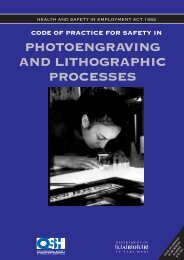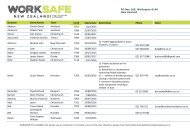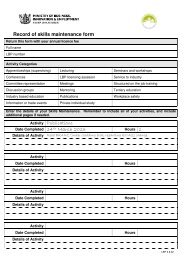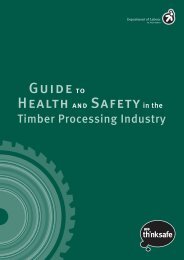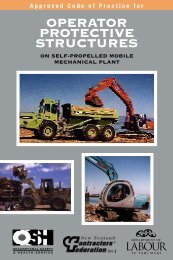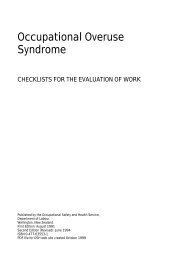Annual Report 2012 - Business.govt.nz
Annual Report 2012 - Business.govt.nz
Annual Report 2012 - Business.govt.nz
You also want an ePaper? Increase the reach of your titles
YUMPU automatically turns print PDFs into web optimized ePapers that Google loves.
Part 1: AsbestosWhat is asbestos?Asbestos is a term used to describe naturally occurring fibrous hydrated silicates of whichthere are six common varieties.Figure 1 shows the different types of asbestos.AsbestosSerpentineGroupAmphiboleGroupChrysotile(white)ActinoliteTremoliteAnthophylliteAmosite(brown)Crocidolite(blue)Figure 1: Types of asbestosAmosite (brown asbestos) and crocidolite (blue asbestos) have straight needle-like fibreswhich naturally split in their long axis, producing very fine fibrils (thin fibres). In contrast,chrysotile (white asbestos) has softer curlier hair-like fibres, which makes them useful forweaving, and they have been used to make asbestos cloth for centuries.When these fibres are inhaled, they behave in different ways in the lungs.Chrysotile (magnesium silicate) fibres slowly lose magnesium, which leaches into body fluids,making the fibre more easily digested by scavenger cells (macrophages). This reduces thebody burden of the asbestos dust, and has led to the view that white fibres are less harmfulthan blue or brown fibres.Crocidolite (iron-sodium silicate) fibres are straight and rigid and can split longitudinally.They are more resistant to body fluids and can survive unchanged in the body for up to 40years or more. The fine fibrils can migrate through the lung tissue to the lung lining (pleura).Asbestos and other Occupational Lung Diseases in New Zealand <strong>2012</strong> <strong>Annual</strong> <strong>Report</strong> Page 6


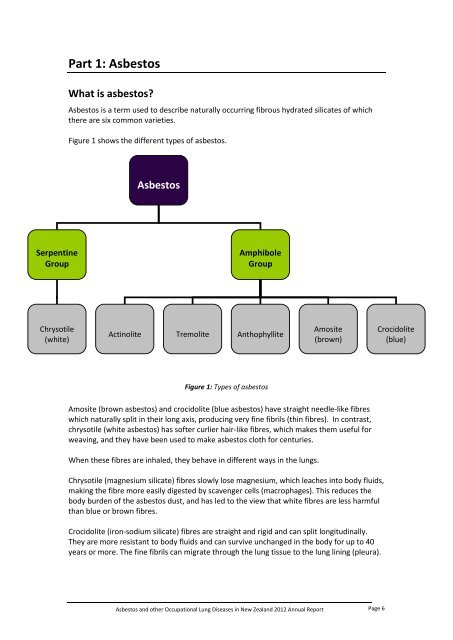

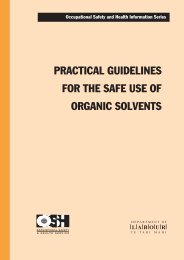
![Task analysis worksheet [161 KB PDF] - Business.govt.nz](https://img.yumpu.com/51400981/1/190x135/task-analysis-worksheet-161-kb-pdf-businessgovtnz.jpg?quality=85)
